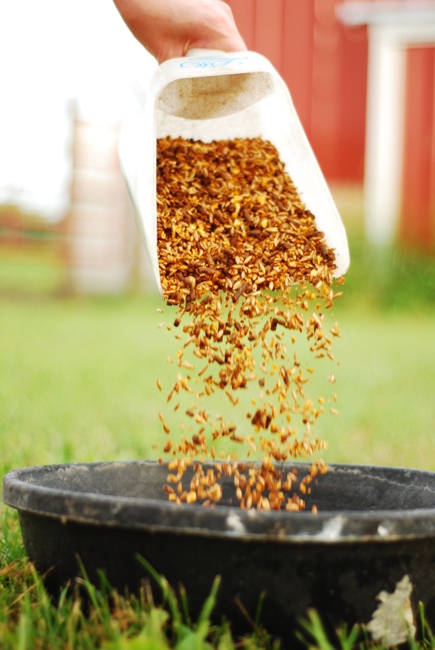What’s the Shelf Life of Horse Feed?

Feed freshness is a concern for many horse owners. We all want to feed our horses the best we can. When it comes to freshness there are several factors involved, one of those being the expected shelf life of feed. Horse owners and barn managers who understand these factors and practice good inventory rotation will be able to provide their horses fresh feed on a regular basis.
Shelf Life
First, what is shelf life? Shelf life can be described as the length of time a feed is considered to have the nutritional quality and physical characteristics as intended when it was produced from the manufacturer.
In food terms, you may see ‘Best if used by’ or ‘Sell by’ followed by a date. Human food is tightly managed and there are regulations that food processors, distributors and retailers need to follow to make sure that the food they put on their shelves is within date.
Most horse feeds do not have a ‘Use by’ date due to the process of manufacturing as well as the different storage conditions that feed is exposed to from when it is made to the time it is in your scoop. Therefore, understanding what affects the shelf life can help you to provide your horse with fresh feed on a regular basis.
Feed Form
The form of feed you purchase has an impact on its shelf life. For example, a feed in the form of a pellet has undergone a process which involves cooking with heat and steam, followed by the use of centripetal force to push it through a die (think Play Dough machine) before it is cooled and dried. This high temperature cook and cool helps to make the nutrients more available for digestion as well as improves the shelf life (cookie dough is only good for a few days, but baked cookies stored properly can last up to 2 weeks (well, not in my house!).
On the other hand, ‘textured’ or grain-based feed (where you see the oats, barley or cracked corn) which has had oil and/or molasses added has not undergone the same amount of ‘cooking’ as a pellet and therefore has a shorter shelf life. Alone, the dry grains have a good shelf life, but when oil, molasses or other liquids have been added, the shelf life is shortened.
Generally speaking, a pelleted feed stored in ideal conditions won’t begin to lose nutritional quality until it is approximately 6 months old. That’s a long time for a feed to still be good! On the other hand, textured feed tends to lose nutritional quality around 90 days from date of manufacture.
Mold
One of the biggest risks regarding storage of feed is the potential growth of molds. Molds are present in low levels all around us, but when exposed to certain conditions, molds can proliferate. Molds love an environment that is warm and moist therefore, feed should be stored in a cool, dry place.
Ensuring the Best Nutrition
What can you do to make sure your horse gets the best nutrition from the feed you buy?
- Feed makers and retailers set their own guidelines for shelf life of their products and they vary by the product.
- Warm or humid temperatures will speed up the deterioration of quality as well, so pay especially close attention in the summer, and possibly even purchase less feed on a more frequent basis during those warmer months.
- When you purchase feed from your retailer, ask how long they have had the bag of feed and under what conditions it has been stored.
- When you get feed home, be sure to inspect it, looking for bugs or mold.
- If you see indications of either, take the bag back to your retailer immediately.
- Do not feed moldy or bug infested feed to your horses.
Any feed you store on farm should be kept in a cool, dry place, protected from infestation of pests. Read here for tips on how best to store feed on your farm.
Ready to ensure your horse is getting the optimum nutrition at feeding time, every time? Find the perfect feed formulated specifically for horse’s needs with our Feed Selector Tool.
